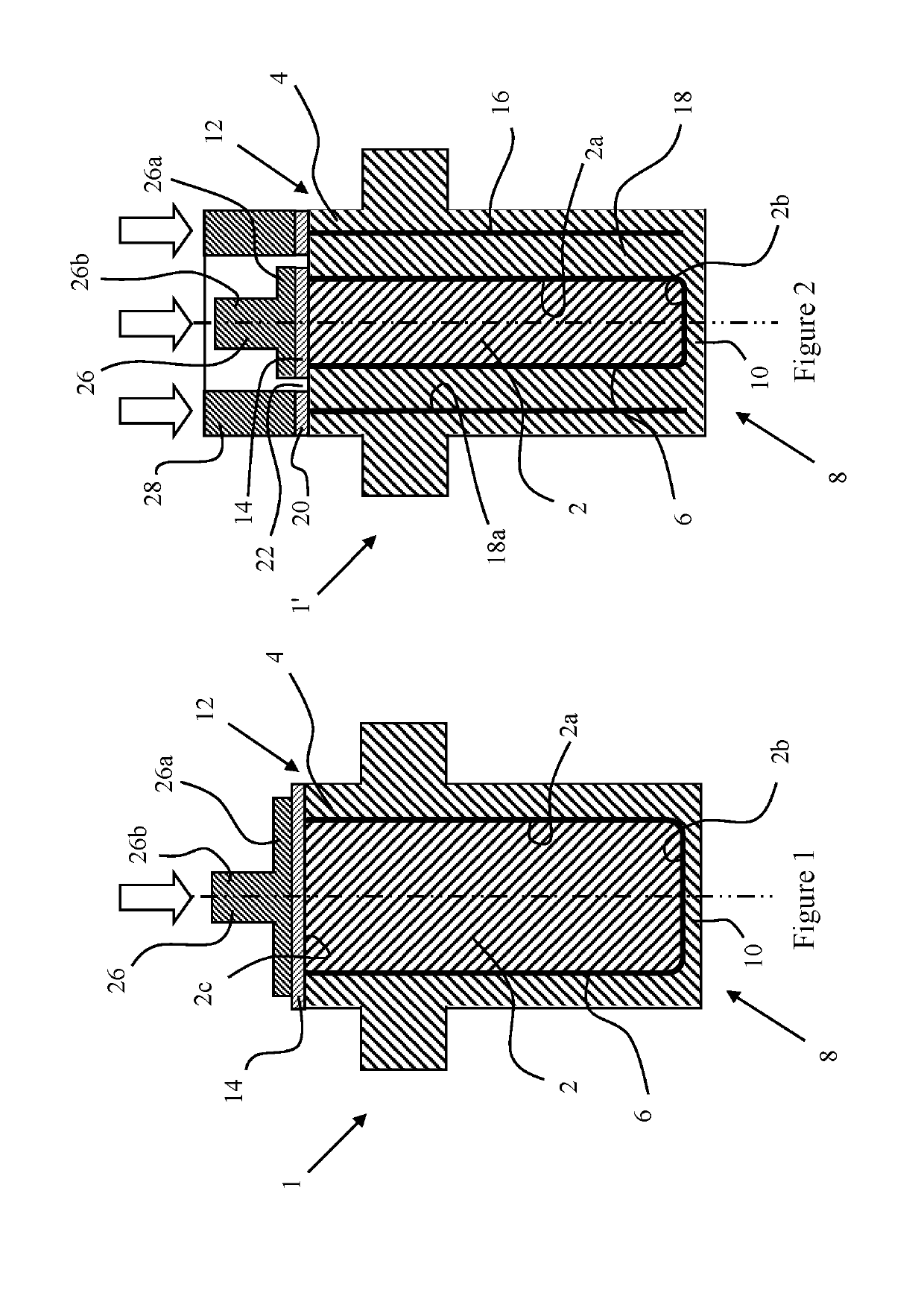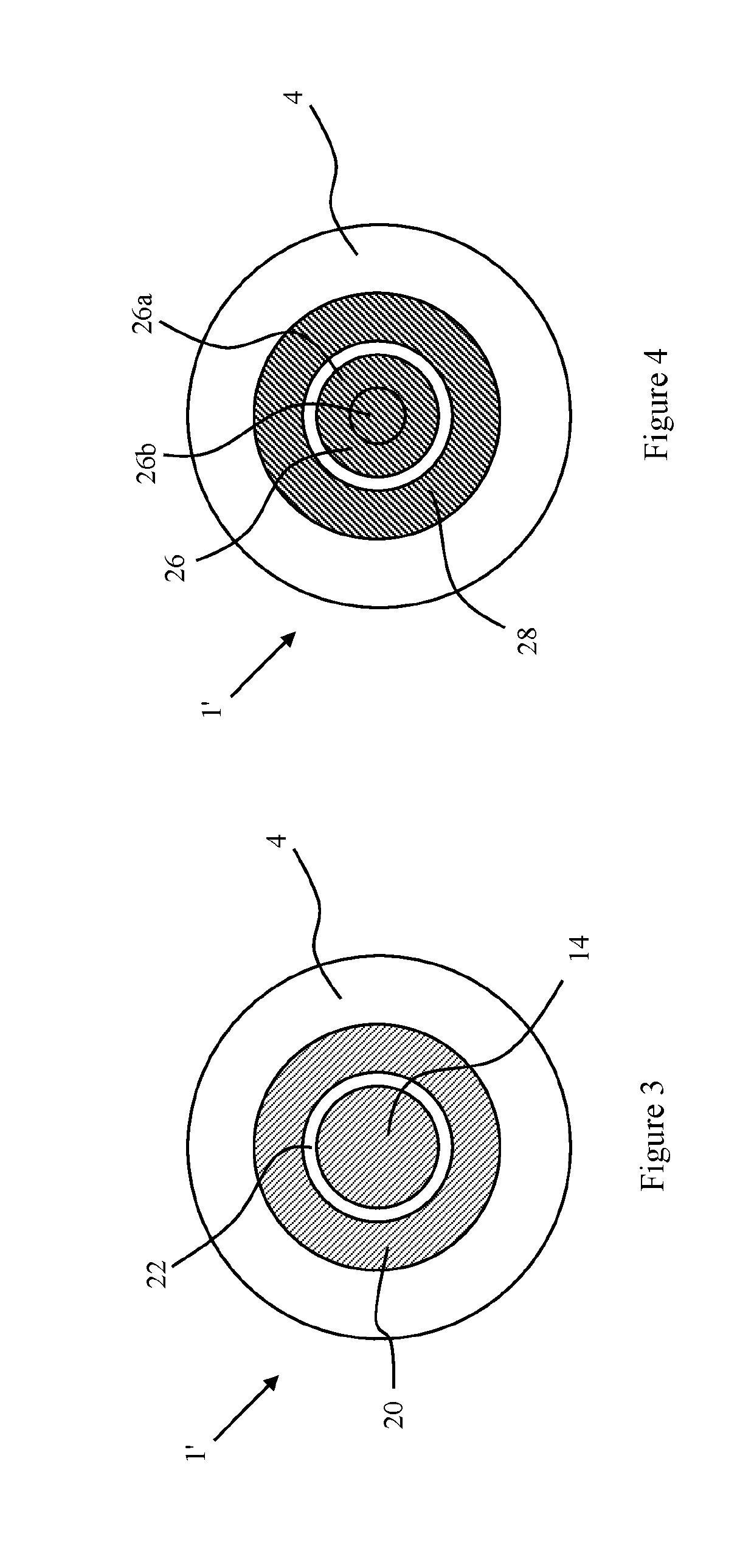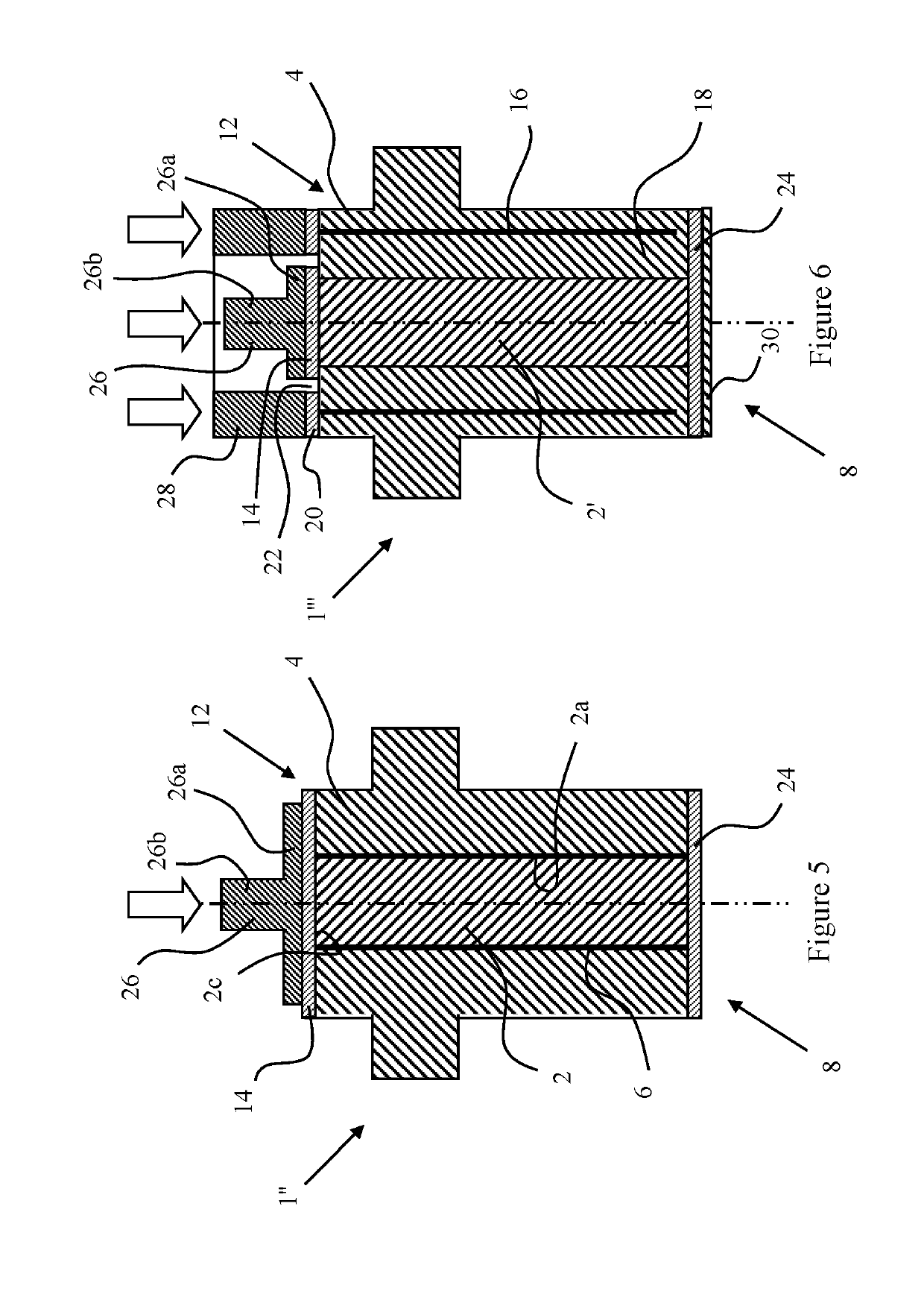Multi-layer electrically conductive sensor
a multi-layer, electrically conductive technology, applied in the direction of measuring devices, instruments, measuring apparatus housings, etc., can solve the problems of difficult to find a metal suitable for use at higher temperatures, the operating temperature of active braze alloys is limited to about 800° c, etc., to achieve the effect of minimising stresses
- Summary
- Abstract
- Description
- Claims
- Application Information
AI Technical Summary
Benefits of technology
Problems solved by technology
Method used
Image
Examples
Embodiment Construction
[0062]FIG. 1 shows a first coaxial sensor assembly according to the present invention. A coaxial sensor body 1 includes a core layer 2 and an outer insulating layer 4 that are made of the same electrically non-conductive ceramic material such as silicon nitride (SiN) or SiAlON. An electrode layer 6 of metal such as titanium (Ti) or molybdenum (Mo), an alloy of titanium, or an electrically conductive ceramic such as titanium nitride (TiN) or molybdenum disilicide (MoSi2) is applied as a coating and covers the cylindrical outer surface 2a of the core layer 2 (or the cylindrical inner surface of the outer insulating layer 4). The electrode layer 6 covers the front planar surface 2b and optionally the rear planar surface 2c of the core layer 2.
[0063]The outer insulating layer 4 extends along a front part 8 of the sensor body 1 which in use is exposed directly to high operating temperatures. For example, if the sensor assembly forms part of a capacitive sensor that is used to measure the...
PUM
 Login to View More
Login to View More Abstract
Description
Claims
Application Information
 Login to View More
Login to View More - R&D
- Intellectual Property
- Life Sciences
- Materials
- Tech Scout
- Unparalleled Data Quality
- Higher Quality Content
- 60% Fewer Hallucinations
Browse by: Latest US Patents, China's latest patents, Technical Efficacy Thesaurus, Application Domain, Technology Topic, Popular Technical Reports.
© 2025 PatSnap. All rights reserved.Legal|Privacy policy|Modern Slavery Act Transparency Statement|Sitemap|About US| Contact US: help@patsnap.com



